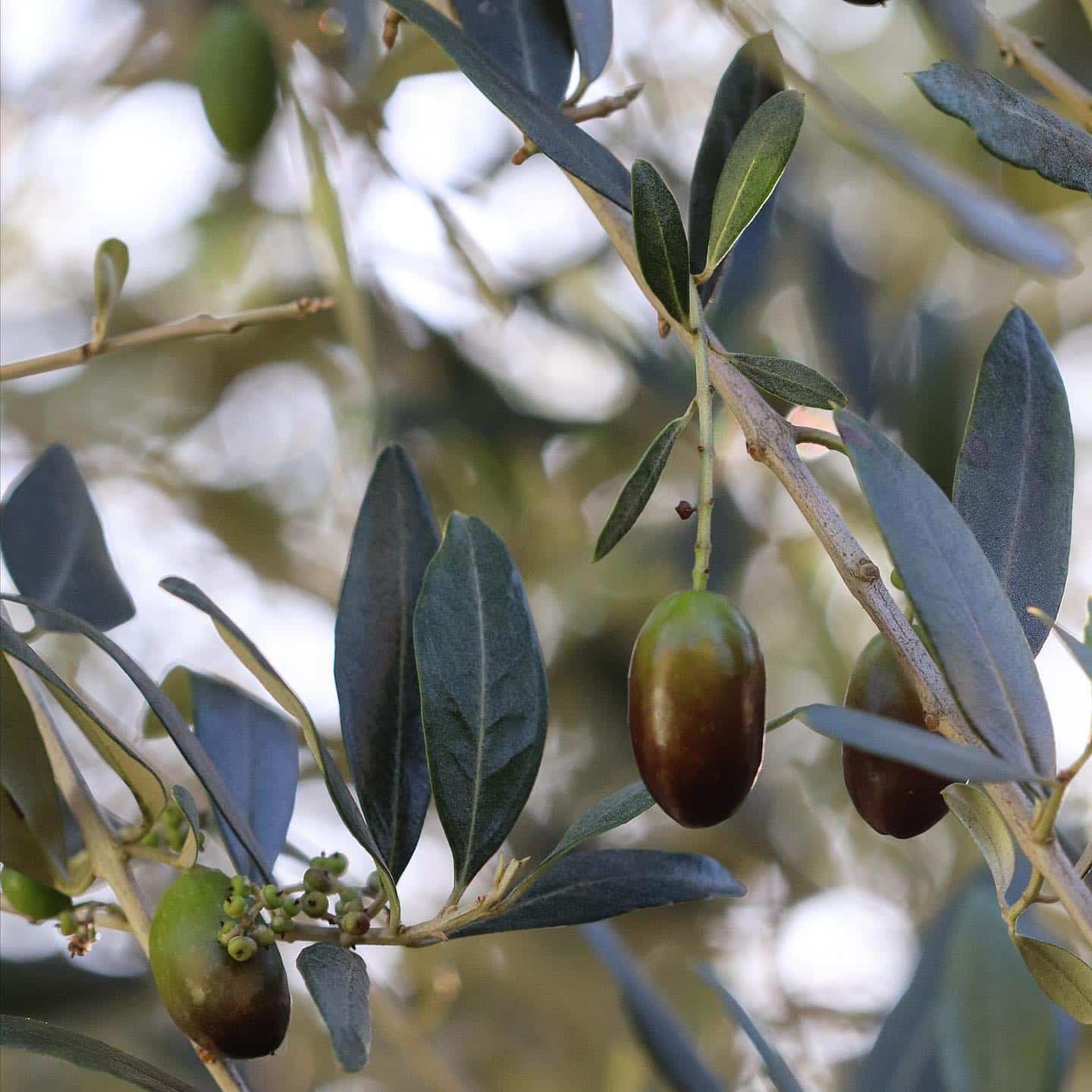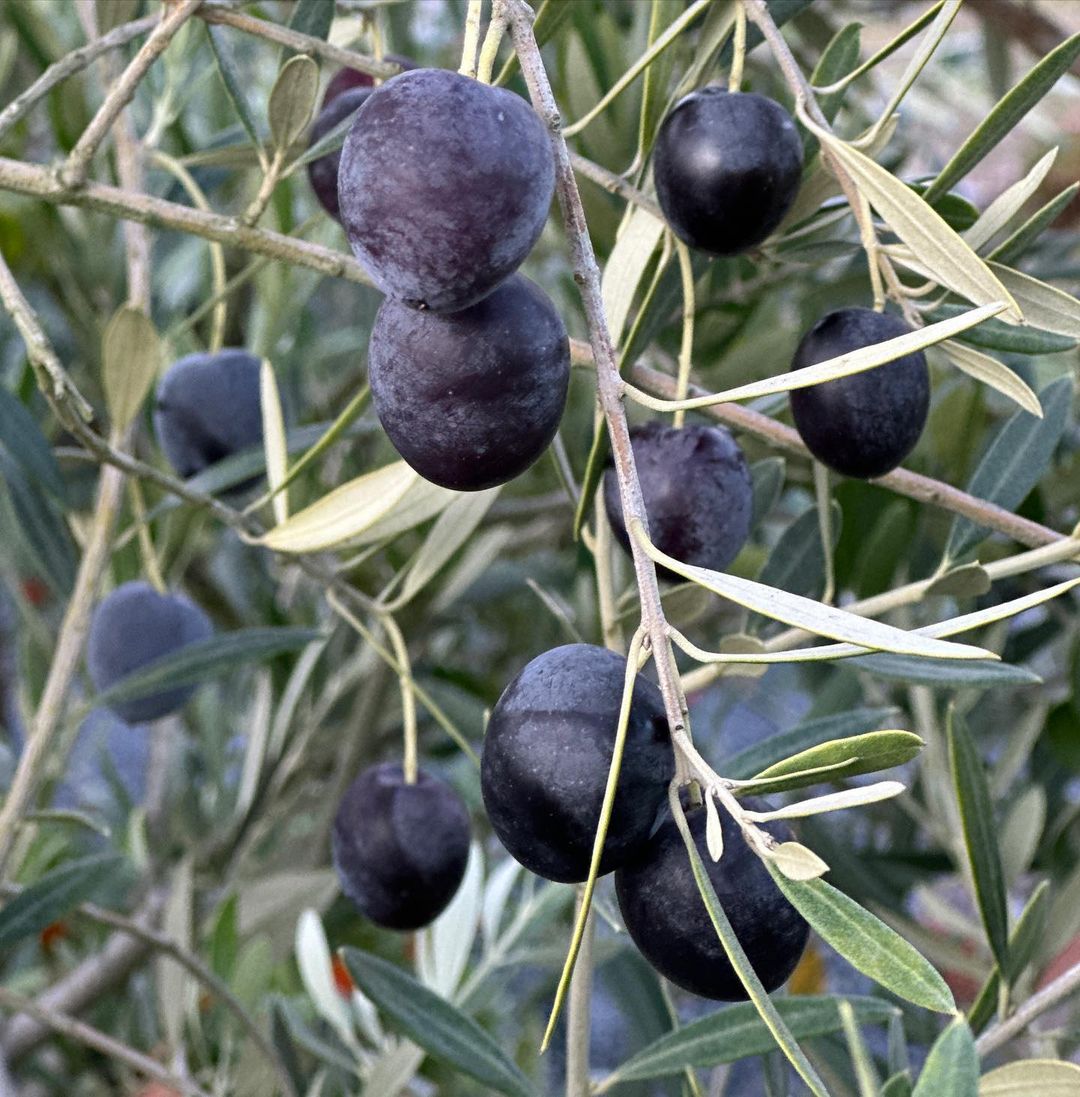However, confirm whether the Olive trees are dead or dormant because the symptoms are similar for both.
Table of Contents Show
How To Tell If Olive Trees Are Dead?
You can find out whether Olive trees are dead by observing some after-death symptoms.
Moreover, it is problematic to tell if Olive trees are dead in winter, as the plants enter dormancy.
This is because the plants show similar symptoms when they are dead and dormant.

Here are some signs that help you to assess the health of Olive trees.
Leaf Inspection
- Color: Healthy leaves are vibrant green, and if the trees start producing brown, brittle, and crispy leaves, then it might become a problem.
- Texture: Dead leaves may be wilted, and fall off easily.
Branches & Twigs
- Elasticity: Bend some smaller branches, and if they snap easily and appear dry, the plant might be dead.
- Lack of growth: Lack of new growth or buds in the Spring can be a sign of trouble.
Bark
- Texture: The bark of healthy Olive trees is generally smooth. Moreover, if you notice the peeling, cracking, or unusual discoloration on the surface of tree bark, realize the trees may be dead or they are dying.
- Microbial invasion: Inspect the bark for diseases, pests, or unusual growths.
Trunk
- Scratch test: Scratch a small portion of the trunk, and if you see the tissue green underneath, then the tree is healthy. However, brown or dry tissue indicates that the tree is dead.
Roots
- Exposure: Try to check the roots, healthy roots are firm and white. While the mushy or discolored roots denote the dead and decayed roots.
Seasonal Changes
- Delay in phenology: The Olive trees usually bloom in Spring. If trees continuously fail to produce flowers or fruits, it may be due to the death of trees.
How To Revive Dying Olive Trees
To revive dying Olive trees, you have to put some easy effort into the plants.
Here are the steps to revive the dying Olive trees.
- Identifying the problem: First, identify the cause behind the progressive death of Olive trees. Olive trees might be dying because of various causes, such as pests, diseases, improper soil, inadequate watering, and environmental stress.
- Pruning: Remove the dead and damaged branches from the tree. Moreover, the removal of unnecessary plant parts redirects the tree’s energy to healthier plant parts.
- Watering: Ensure the trees receive consistent and appropriate watering. Similarly, water the plants once a week to promote healthy growth.
- Fertilization: Application of Nitrogen-rich balanced fertilizers once a year during growing seasons will help your Olive trees reach their maximum size.
- Sunlight & Temperature: Furnish your Olive trees with bright and direct sunlight for 4-6 hours at a temperature of 64°F.
How To Tell If Olive Trees Are Dormant?
Like many evergreen and deciduous trees, Olive trees also go through a period of dormancy.
Moreover, the plants go dormant to conserve energy by reducing metabolic activities.

Here are some signs and symptoms of dormant Olive trees.
- Leaf drop: During dormancy, the Olive trees shed all or some of their leaves. However, the trees regrow new leaves when the conditions become favorable.
- Slow growth: Due to decreased metabolic activities, the plants start slowing down.
- Color change: The color of the remaining leaves may change when the plants enter dormancy. Moreover, they might become less vibrant or turn into yellow or brown.
- Lack of flowers and fruits: All the metabolic activities in the plants, including fertilization and fruit formation, are stopped during dormancy. So, if you see there is no flower or fruit formation in your Olive trees, realize the plants have undergone dormancy.
- Timing of the dormancy: If the plants show the above-mentioned symptoms during the winter season, then there is more probability that the plant has undergone dormancy. Moreover, this is because most of the plants enter dormancy during cold months.
Tips To Overwinter Olive Trees
You must take some preventive measures to protect Olive trees from the cold extremes.
Here are some tips for overwintering Olive trees.
- Choose cold-resistant varieties: When you are growing Olive trees at high altitudes, choose cold-resistant varieties to protect the trees from cold extremes.
- Mulch around the base: Apply a thick layer of mulch around the trees to insulate the soil and protect them from temperature fluctuations.
- Adequate watering: Applying the appropriate amount of water to the Olive trees before the onset of the winter season helps to survive the plant during dormancy.
- Inspect for pests and diseases: the pests and microbes are more active during the colder months. So, you can control them using Neem oil.
- Moisture level: Although the plants go dormant during winter, they still need moisture for survival. So, inspect the moisture level with the help of an electric humidifier, and mist them frequently.
From Editorial Team
Conclusion!
You can increase the Olive tree population through propagation, stem cuttings, and seeds.
However, do not forget to sterilize the propagating equipment to prevent the risk of spreading the disease.
